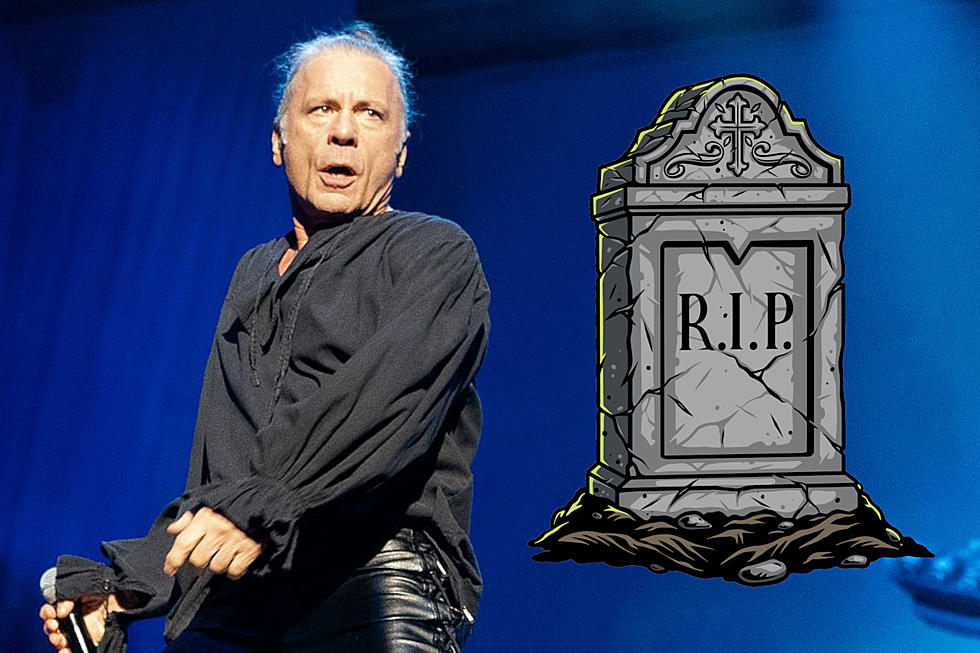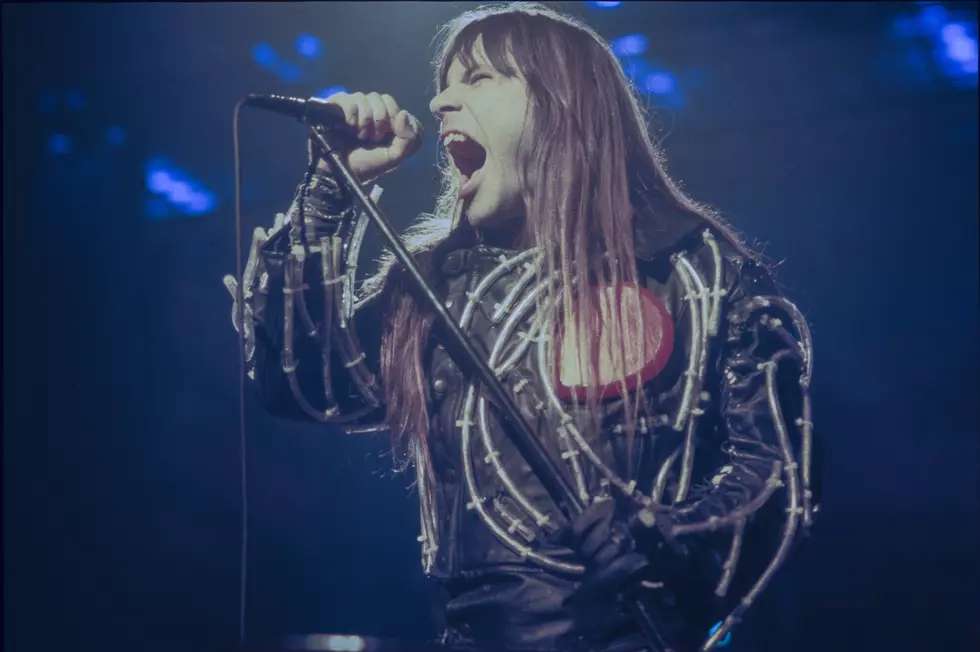
How Bruce Dickinson Inspired Iron Maiden’s ‘Number of the Beast’
Iron Maiden's path to creating one of metal's cornerstone albums was dotted with uncertainty. How would new singer Bruce Dickinson mesh within the larger band dynamic? Could they more completely integrate second guitarist Adrian Smith? And what about, you know, some songs?
For the first time, Iron Maiden had entered the studio without a cache of work from leader Steve Harris. That put an even brighter spotlight on The Number of the Beast, which officially ushered in the post-Paul Di'Anno era on March 22, 1982.
"Things with Paul hadn't been going terribly well, and they'd made the decision to get rid of him," Dickinson told Billboard. "So, they came and took a peek at me."
Dickinson had a connection with the late Iron Maiden drummer Clive Burr via the band Samson. Still, the strong-willed singer arrived with some ground rules.
"'First of all,' I said, 'if I do the audition, I'm going to get the job, so you need to figure out whether or not you want me on board, because I don't want to be unless I can be a pain in the ass and have some opinions. I'm not going to be like the old guy. I'm going to have disagreements with Steve, because I've got some ideas about how I want to change things around. So, if you don't want that, you'd better tell me now.'"
They played a short string of shows to build chemistry, then set about recording a follow-up to 1981's Martin Birch-produced Killers. Contractual obligations meant Dickinson didn't receive any official songwriting credit, but his fingerprints were all over The Number of the Beast.
Watch Iron Maiden Perform 'Run to the Hills'
"I knew that I had joined a great band; I also knew I could make it even better," Dickinson told Classic Rock. "I had a vision for The Number of the Beast: My voice glued on to Maiden equals something much bigger."
Still, in a telescoped time frame filled with so much uncertainty, pressure mounted. On at least one occasion, chairs were thrown.
"Not only did we have a new singer, but we also had to come up with the goods to come out with a really strong album with completely new material," Harris admitted in a talk with UCR. "The weird thing is that all of that material was written in a two- or three-week period, because that’s all of the time we had."
Another band might have turned inward during such a stressful period, releasing something far more conservative. Instead, Iron Maiden went widescreen. Fired by input from every band member, The Number of the Beast was a work of varied gumption. Always so adept at galloping triumphs like Harris' "Run to the Hills," they now moved confidently into other intriguing musical areas – from the proggy, group-written "The Prisoner" (referred to as heavy metal Genesis) to the jazz-inflected "Gangland."
The subject matter was similarly diverse, as Smith co-wrote his first trio of songs.
"On the Killers album, Adrian was very new, and it really wasn't until he'd been with the band about a year a half that he really felt he was a full member," Harris told Artist magazine. "He always had been, but he never really seemed to accept that it was happening. ... It took him quite a while to settle in, and it also took both him and [fellow member] Dave [Murray] a long time to get the right guitar sounds. Then Bruce came in and he really did fine things for the band too."
Watch Iron Maiden Perform 'The Number of the Beast'
Iron Maiden took inspiration from the world around them (the film Children of the Damned, the '60s-era British TV series The Prisoner), and from the next one too: Both the title track and "Hallowed By Thy Name" challenge perceptions about faith and the hereafter. They stirred in weighty historical allegories ("Invasion" and "Run to the Hills" explore themes of military conquest and the fate of native people), while paying tribute to their own past ("22 Acacia Avenue" circled back around to "Charlotte the Harlot").
The result, Dickinson later mused, was something that "sounded completely new – people had never heard anything quite like it before." The Number of the Beast not only became their first-ever No. 1 album on the U.K. charts, where it remained in the Top 75 for more than 30 weeks, it finally broke Iron Maiden in the U.S. – becoming their first Top 40 record.
"It was a scary time period," Harris told UCR, "because we’d just changed singers and, at the time, it was a very traumatic period for us – worrying about how people would take to the new singer. But take to him they did, in a big way, so we didn’t need to be worried! [Laughs.] But before the album came out, it was very worrying. We knew we had a really strong album and we knew we had a really great singer in Bruce, but you just never know how people are going to react."
Iron Maiden still struggled to earn airplay, in particular outside the U.K. Still, even without a hit single, The Number of the Beast began a string of five consecutive million-selling albums in the U.S. Credit Iron Maiden's tireless touring schedule. Lamenting that "there were very few radio stations that were playing the band," Murray told Classic Albums that "basically we had to go out there on tour and, hence, we go everywhere – East Coast, West Coast and everywhere in between."
The Beast on the Road tour became the second-longest of Iron Maiden's career, spanning 180 shows across the globe over a similarly compact 10 months. They emerged not just with their biggest hit yet, but also with a diamond-hard approach to their future.
The Number of the Beast "dictated the way we’ve recorded everything since," Harris told UCR. "We thought, 'Well, that’s the way we work well – under pressure, obviously,' so that’s what we’ve done ever since. We’ve just allowed ourselves a specific time of period to write and that’s what we do. So, we don’t ever write on the road. We just write right there [in the moment] – and it’s worked well for us ever since."
Top 10 Reunion Tours
Iron Maiden's Rarest Songs
More From Ultimate Classic Rock









